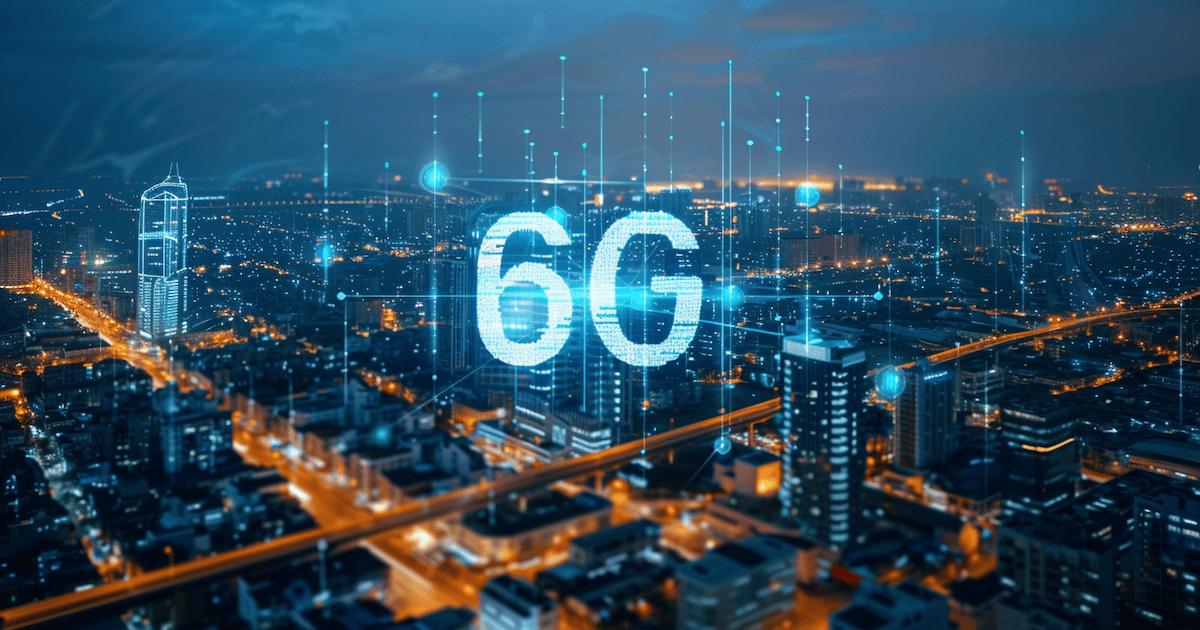
Secret agendas.
Money. Power. Espionage…
The geopolitical battle for who influences the standards for 6G is well underway.
The incentives are everything I mentioned above, not to mention the streams of intellectual property royalties and controlling future market share.
We’re in for an interesting couple of years behind the scenes… as the world’s most powerful countries and technology companies come together to set 6G requirements, laying the foundation for early 6G standardization.
As we learned in yesterday’s Outer Limits — The Geopolitics Around 6G, there is already a technological and espionage battle between China and the rest of the developed world when it comes to 5G, and ultimately 6G wireless technology.
This type of geopolitical jockeying is amorphous to most consumers. It’s just something that is never seen or understood.
But what all users of wireless technology do care about is what 6G will mean in terms of new applications and performance.
Anyone using mobile phones back in 2009 can attest to this fact…
4G radically changed the kinds of software applications that could run on our phones.
Without 4G, ride hailing services wouldn’t have been possible, at least not at the touch of a button with real time mapping and tracking.
It wasn’t a coincidence that Uber launched in 2009, just as 4G was getting ready to roll out. And Lyft followed a few years later — in 2012 — for the same reason.
Social media apps like Facebook launched its first iPhone app in the summer of 2008. Twitter followed in 2010. Snapchat in 2011. And Instagram in 2012. Social media applications skyrocketed on 4G.

The gaming industry was also transformed.
The combination of powerful smartphones and 4G connectivity made gaming not only possible, but social. 4G-enabled multiplayer games flourished, allowing players to compete as teams or with each other in real time.
Clash of Clans was launched in 2012, and Pokémon GO in 2016, adding an augmented reality (AR) twist to gaming in the real world.
The ”secret” to all of these applications, and many more, was radical improvement in both download speeds and latency (delay) with 4G technology.
Average 3G speeds tended to be less than 10 Mbps. That jumped to more than 100 Mbps with 4G, and advanced implementations of 4G are measured in hundreds of Mbps. It was at least a 10X improvement in download speeds compared to 3G.
A similar thing happened with latency. Latency is basically the amount of time it takes for data to transfer from one source to another. For example, from a gaming server to a consumer playing a game on their phone.
In 3G, latency tended to be 250-500 milliseconds. (Note: There are a thousand milliseconds in a second.) That may not seem that much, but in the world of wireless communications, it was.
And it was perceptible to the user. 4G dropped latency to around 100 milliseconds, sometimes a bit less. It was a major improvement.
The same thing happened with the jump to 5G.
Wireless download speeds popped to 1 Gbps, with peak downloads approaching 10 Gbps. And latency dropped to around 10 milliseconds, down from 4G at around 100 milliseconds.
While most of our apps are largely the same on 5G as they are on 4G, heavy bandwidth apps like watching YouTube videos, Hulu shows, multiplayer games, or any kind of video streaming has dramatically improved with the added performance and bandwidth of 5G.
So where does that leave us with 6G? How will it change and improve over 5G? And what will that look like to us consumers?
As for the basics, we’ll see an increase in speed of at least another 10X.
So if normal speeds on 5G are around 1 Gbps, then we’ll see on average 10 Gbps using 6G. And peak speeds will be around 100 Gbps.
The same is true for latency. We’ll see a drop from around 10 milliseconds down to just 1 millisecond.
But 6G won’t just be about increased speed and reduced latency.
One of the most interesting and fundamental changes will be to design artificial intelligence (AI) directly into the underlying communications technology.
I’m referring to the “air interface,” or the structure of the data that is wirelessly transmitted to — and received from — base stations and smart phones.
Here’s an easy way to think about what this means: The wireless network will be intelligent and able to optimize communications in real-time.
The network will be able to optimize itself for both the application that is being used, and the hardware (smart phone, base station) that the connection is established between.
For example, if someone is using a news application like Bloomberg, the app will only need to download data when the user wants to read a new story. Downloads would happen in bursts, depending on what the user needs to access. Another user may use an app that has a live stream, where video is being streamed in real time.
Some of this happens with 4G technology, specifically bandwidth can be “sliced” into segments for the purpose of ensuring quality of service. But we can think of this as a feature that is manually programmed and primarily used for enterprise or industrial applications.
6G will be entirely dynamic, provisioning on the fly, and optimizing for every single connected device.
Not only will this new native AI technology in 6G make more effective use of the available bandwidth of the wireless network, it is far more energy efficient.
With the help of AI, the network and its users only use the power that they need, based on the application they are using. Without this, the wireless networks would become congested and slow, due to the exponential growth in wireless data traffic.
Another scenario would be for AI agents to be able to identify unusual activity on a network and swarm to where they are needed.
Imagine a sudden burst of social media activity in a specific area of a city. Perhaps it’s a riot or a major concert, which results in heavy network utilization. AI can engage to help manage the traffic and even route additional network capacity to support the heavy data traffic.
6G networks will also be even more dense in terms of base stations and small cells than 5G.
This is a natural evolution, as 6G will largely be at even higher frequency bands than 5G. What this means to us is that 6G networks will be able to communicate with tiny sensors, from a small glucose monitoring device implanted in our body… to industrial sensors used to monitor environmental conditions.
6G will also be the first wireless technology to be designed to communicate with high-altitude platform systems (HAPS), and even satellites.
Another hot topic right now is the need for designing 6G for a post-quantum environment. By 2030, quantum computers will be widely in use, thus rendering existing communications security technology useless. 6G will need to be designed with security technology that makes it resilient to hacks from those who have access to quantum computers.
Bandwidth-heavy applications will benefit greatly from 6G, as well. Wireless virtual reality (VR) and augmented reality (AR) applications are a great match for 6G.
And while we may see little use for that kind of technology today, as we’ve only just seen the release of a very high-end Apple Vision Pro, by the 2030s, we’ll see mass-consumer market-priced AR/VR devices everywhere… whether we like it or not.

And the most data intensive interactive application will be holographic communications.
We’ll be able to interact and communicate with holographic images of real people, virtual people (like our personal AI assistants), and virtual characters (for example, from gaming or learning applications).
This is when science fiction becomes reality.
We always welcome your feedback. We read every email and address the most common comments and questions in the Friday AMA. Please write to us here.